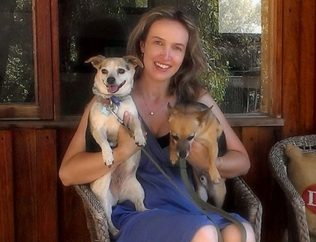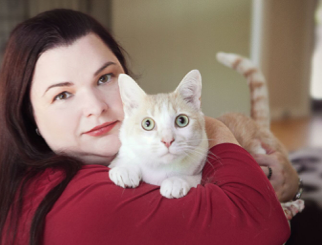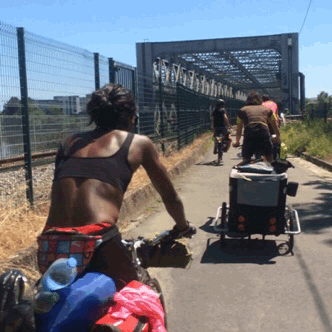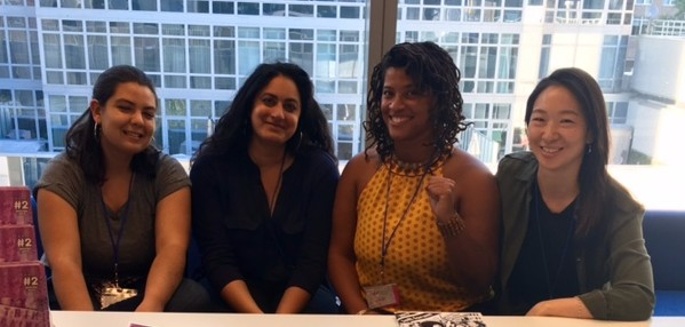A guide for animal rescue groups and individuals who want to use crowdfunding to raise funds to pay vet bills or help care for animals in need.

Introduction
Donation-based crowdfunding is a way to source money for a project by asking a large number of contributors to donate a small amount, and asking a small number of contributors to donate a large amount. In return, backers may receive token rewards or acknowledgements for donations.
Crowdfunding is a great way for small organisations to grow their online following and address both short- and long-term fundraising needs. Larger established organisations can also benefit from this new and exciting way to engage existing supporters while reaching new audiences.
All you need is a clear idea of what you’re raising funds for and a good understanding of what crowdfunding is and how it works. There’s no ‘One size fits all’ in Crowdfunding: Crowdfunding for Animals can take many shapes and forms, including (but not limited to):
- covering vet bills of a single rescue animal
- engaging and empowering the wider public to raise awareness
- building a whole new animal sanctuary or hospital
The following examples will give you a better idea of the variety of Animal Cause campaigns on Chuffed.org:

Summary
This guide is designed for small animal rescue shelters or other animal welfare organisation who want to understand how to use crowdfunding to fundraise for their animals and causes. It’s based on our experience with hundreds of shelters but uses specific examples from two shelters based in Australia – Forever Friends Animal Rescue and Maneki Neko Cat Rescue.
Forever Friends Animal Rescue is the largest animal rescue in Victoria, Australia and have over 600 pets in their care at any given time. That’s more than the RSPCA head office branch in their area. Completely run by volunteers, they have no paid staff. Despite this, they’ve managed to raise over $90,000 through crowdfunding on Chuffed.org in the past year alone.
Maneki Neko Cat Rescue have 180 active foster carers and volunteers and have anywhere between 300-400 cats in care at any one time. In 2016, they rehomed 830 cats, and in 2017, they’re on target for over 1000. They have grown exponentially over past 3 years: in 2014, they only rehomed 180 cats. Then in 2015, that jumped to 360. By 2016, they were at 830 cats rehomed. So far, Maneki Neko Cat Rescue has raised $29,150 on Chuffed.org.
This guide focuses on raising funds for a single animal. Larger projects (with 5- or 6-figure targets) require a slightly different approach, and it may be best to get in touch with us to discuss your project in more detail. You’ll also find examples and case studies at the end of this guide.
So, whether you’re a small rescue group with a small online following and just starting out, or an established organisation looking to reach new audiences, this guide will help you on your way!
Here’s how they did it
Before you start: Choose a crowdfunding platform
We’d of course recommend using Chuffed.org, for three reasons:
- You get to keep 100% of what you raise even if you don’t hit your target.
- org doesn’t take a cut of your donation (most platforms charge 5-12% payment processing and platform fees). Instead we let donors decide if they give to Chuffed.org or not on top of their donation. Donors also cover the payment processing fees.
- org only supports social cause campaigns, so you’ll be amongst other people like you, not people funding their holidays.
Step 1: Choose a single animal
Rather than fundraising to help ’10 kittens’, or ‘help save the lives of the animals in our care’, we found that choosing one specific animal to fundraise for works best. Most animal rescue groups care for several animals at any given time, and there’s always more than one animal in need. We recommend raising funds for 1 animal at the time and choosing an animal that:
- Has a very visual issue, you can see something is wrong with them (ie. they have a broken leg or an X-ray that shows something’s wrong)
- Needs a life-saving or life-changing surgery (ie. helping a kitten with a broken paw walk again)
- Has some sort of visual X-factor (ie. a cute kitten, puppy or an older dog that just has the sweetest smile).
Step 2: Get a good quality header image
The photo that you use as the header image for your campaign is critical to your success. It’s the first thing that potential supporters see and it’s what gets shared on social media. You want it to be high quality, inspiring and engaging.
Before you launch your campaign:
- There are several ways of getting a high-quality image: take it yourself, ask a volunteer or the vet to take a photo for you, or use their pound photo. You don’t need fancy cameras – though they help. Most people just use a good phone camera. You can also use X-rays or scans from the vet.
- Take the photo with the animal looking at the camera. Sad photos tend to work better than happy ones, but you don’t want to guilt people with shocking photos (org is a guilt-free site. We reject campaigns that use guilt-imagery like graphic, disturbing images of animals).
- If you’ve got multiple images, you can use the other ones in the campaign description.
- If the animal you’re fundraising for requires surgery, we recommend taking a photo of the animal going into surgery – you can use these later to update your donors on the progress of the surgery.

After the campaign ends:
- Take a photo of the animal after surgery. Again, you’ll use this to update donors, but also to update your main campaign photo. The reason for this is that you want future supporters to see lots of examples of the impact you made previously.
- Forever Friends Animal Rescue uses a template over the top of the image with their logo and the campaign title. This isn’t necessary but does create consistency over multiple campaigns. This is what people see when they search “Forever Friends” on Chuffed.org:

Step 3: Write a strong title and compelling story
The Title
Your title is the second thing potential donors see after the photo. Make sure it’s short (4-5 words) and easy for people to understand what difference they’re going to make. You can add an exclamation mark to add a sense of urgency. For example, if an animal needs surgery that will help them on their feet again, call your campaign something like: Help Nala Walk Again!
As a bonus, you can try alliteration: “Help Red Run Again”, “Save Eddie’s Sight”, “Help Wobbles Walk” all worked well for Forever Friends Animal Rescue.
The Pitch text
Once you’ve piqued a potential donor’s interest with a strong photo and title, you need to give them the quick pitch. This is a very brief explanation of what your campaign is about. It’s what donors read to decide whether to read your full campaign page.
All your pitch should do is explain clearly what you’re fundraising for and have a clear call to action.
Here’s a good example:
“Nugget is a sweet two-year-old Staffy mix and he’s been diagnosed with a luxating patella on both hind legs. Help us help him live a pain-free life so he can run and play like a young dog should!”
The Story
Now it’s time to give potential donors the full story.
Typically, project descriptions are 300-450 words. Their aim is to both explain and inspire. Both Maneki Neko Cat Rescue and Forever Friends Animal Rescue use a simple formula for this: explain what’s happened to the animal, then what you want to do and what you’re going to spend the money on.
Remember to write in plain, clear language. While it’s tempting to explain the details of the surgery, a lot of times the animals need complex surgery and explaining the details of the surgery is not going to help inspire people to give – it may just confuse them.
To improve your campaign page even further, you can add additional pictures or videos. Photos from the animal’s rescue or in surgery work well.
Also, if you’ve already spent the money for the surgery, you can still fundraise to pay it off – just be sure to be clear about this to your donors. They won’t mind, they just want to know where the funds are going.
Here’s a great example of a simple but good campaign description:
“The owners of sweet 4-year-old Narla took her to the vet due to her limping. They were told Narla needed surgery on both her back legs to live a normal, pain-free life. Narla’s owners put her back in the car, drove straight to the pound and left her there. She’s been there a month and has run out of time.
Forever Friends doesn’t think Narla deserves to die. We’re ready and willing to take Narla into foster care and look after her during her recovery and find her a forever home, but we need to raise the money to fund the surgery that Narla needs.
Peninsula Vet Care is generously willing to perform Narla’s cruciate ligament surgery on both her back legs for around half the normal cost – $3500 – and we have a foster home waiting. The only thing that is missing is financial support.
Can you make a tax-deductible donation to help us save Narla? This sweet girl deserves a second chance.”
Step 4: Create a Chuffed.org page and upload photo, title and story
Once you’ve got your photo, pitch and campaign description, head to chuffed.org/start and start drafting your campaign. Just follow the steps, put the photo, pitch and description into the campaign editor:
Next, submit your campaign for approval, so we can review your page, and give feedback where needed*.
You don’t need to get it perfect immediately, because you can continue to edit your page, add details or pictures during the pre-launch phase and even after you’ve launched, so you are in full control. Also, once your first campaign is approved, you’ll be able to launch future campaigns without the need for further approval. This is an example of what a campaign page looks like:

Step 5: Promote your campaign
The best campaigns on Chuffed.org do a lot of promotion, and so do Forever Friends Animal Rescue and Maneki Neko Cat Rescue. They both discovered that promotion activities are critical, but they don’t need to be complicated.
The crucial touch-points for promoting your campaign include:
- Before launch: let your volunteers and supporters know you’re about to launch a campaign, get them involved by asking for feedback or let them create their own fundraisers, this will make them more likely to share your campaign on launch-day.
- Launch day: launch big, and through all channels on the same day. In the first few days / week, make sure to thank every donor publicly too, this will make them feel good about donating, but will also show potential donors that others have already contributed.
- During the campaign: send positive updates and celebrate wins like raising 50% of your target. Focusing on celebrating how much you raised, rather than asking for money, and where possible, show updates on how the pet is doing.
- After the campaign: it’s important to thank all supporters, and send them an update a few weeks after on how the pet has been doing. Not just because it makes them feel good, but also because it makes them more likely to support your next campaign too!
The 3 main channels we recommend using are:
1. Facebook
Where to post:
- Your Organisation’s Facebook Page.
- Your Foster Carers / Volunteer Facebook Group (if you don’t have one, consider creating one like Maneki Neko Cat Rescue – Volunteers)
- Your personal Facebook Page (and those of your volunteers and foster carers): this way your own friends and family can help share the campaign to their networks.
What to post:
- Launch Post:
- Create a post for the campaign, using a snippet of the text and link to the campaign to read more and donate. Pin this post to the top of your page for the duration of the campaign.
- Campaign Updates:
- Updates on progress of the campaign (and the pet’s health) are important:
- Celebrating milestones: “we’re halfway there”, “we’ve already raised 30% in 2 days” to remind people about the campaign and show others donated
- Final push: When you get close to your target or campaign end, do another post to remind and let everyone know you’re almost there
- After finishing: End of campaign update and thank you “Thank you for saving Narla who’s recovering well from surgery” makes everyone feel good, and those that didn’t support you this time around, will want to support the next one.
- Header image:
- Change your Facebook header image to include the Chuffed.org campaign header and a link to the crowdfunding page to donate.
- This header stays up until campaign is finished and people who visit your Facebook page can immediately see what’s happening or what you’re fundraising for. You can also update this after a campaign completes to include a thank you.
- Check out Forever Friends Animal Rescue’s Facebook Page for a great example.
- Thanking Supporters:
- Publicly thank supporters for their donations. Do a thank you post at the end of each day/week with the names of the people who donated that day/week.
- This makes your donors feel good and more likely to share your campaign, but also shows others that people are supporting your project.
- If you can tag them in the post, that’s even better because their friends and family will also see this in their newsfeed.
- Volunteer engagement:
- Ask your volunteers to like and share the posts. If you have a volunteer group on Facebook, let volunteers know you’ll be doing a Chuffed.org campaign and ask them to share the campaign link on their own Facebook page or to print a poster to promote the campaign at work.
- For example: “Hi guys, you know Twistie is really sick. Can you please help us share Twistie’s campaign link? Just copy and paste this onto your own Facebook page. Thanks in advance, it would be a great help!”
2. Email
Although Facebook allows you to reach new audiences, don’t forget about email. Not all your supporters will be on Facebook or check Facebook regularly, so reaching out via email will make sure you reach everyone. We even have had successful campaigns just use email only!
- Send an email to your supporters, volunteers and newsletter list to let them know you’re about to launch a campaign (share the pre-launch page for feedback).
- Send a separate email to announce the launch of your campaign, asking them to share it with their networks. If you already do an email newsletter, include a featured section on the campaign, or even better, send a separate email to announce that you’ve just launched a crowdfunding campaign and would like everyone to support & share it.
- Send important campaign updates (ie. we’re 50% there!) so everyone is reminded the campaign is still happening and rather than receiving another ‘ask for funds’, they’re involved in the celebrations.
Think about it as using email to activate and engage your existing supporters, to help you reach new audiences through Facebook and Social Media. Get them involved so they share it with their networks.
3. Messages and Campaign Updates
When you create a page on Chuffed.org and you start collecting the funds, you will also be able to send campaign updates and messages to supporters through our website, even when the campaign is finished. Whether your supporters found out about your campaign on Facebook or via email, you’ll be able to reach out to all of them with a single click on a button. You can also download your supporter data from the website.
Step 6: Receive the funds
When you create your Chuffed.org page, you can choose to collect the funds either by adding your banking details via Stripe Connect (recommended) or via a PayPal account. Stripe Connect is a secure online payment platform that enables payments into a bank account of your choice. You can start receiving funds from the day you launch your campaign and (when using Stripe) you can choose how frequently you want the funds to be paid into your account. This means you don’t have to wait until the campaign is finished to collect your funds and you are in full control.
Step 7: Tell people what happened
Most importantly after you complete a Chuffed.org campaign, is to let supporters know what happened. When you have an update about the animal that you saved, whether it’s 1 week or 3 months later, let them know. Supporters love getting updates on the animals they helped, and it makes them much more likely to donate to your next campaign. You can also use the Chuffed.org message function to contact and send updates supporters.
Frequently asked questions:
How much does it cost to run a campaign on Chuffed.org?
Nothing! Raising funds on Chuffed.org is completely free. Unlike most other platforms, we don’t charge any fees to our campaigners so that projects receive 100% of the funds. Instead, we’ve put our trust in the supporters who at the point of donation, will pay the online payment processing fee and can include an optional donation to support our platform. Lucky for us, it turns out they do! So, if you raise $5,000 on Chuffed.org, you get the full $5,000 straight on your account.
How is this different from a standard fundraising appeal?
Although crowdfunding campaigns and fundraising appeals have the same ideals – that is, to get support (financially or otherwise) for projects that certain individuals or groups believe in – there are a few differences that make it worthwhile to add crowdfunding to your fundraising mix:
- A specific project: Crowdfunding is typically for a specific project (or in this case, animal), where supporters can clearly understand where the money is going and join forces with others to raise the needed funds.
- A sense of urgency: Limiting the campaign to 30 days, with a daily counter and fundraising ‘thermometer’ will create a sense of urgency and encourage people to contribute now, rather next month (though you can choose to run your campaign for anything up to 6 months or without a time limit if you prefer)
- Reaching more people: Crowdfunding campaigns allow you to reach more people and gain more supporters by actively engaging your existing supporters to share the page with their networks, who can then share it with their networks.
- Updates on progress: Good crowdfunding campaigns include updates after the campaign is finished so supporters receive updates on progress and can see their money has made a difference.
- Engaging donors in new ways: Crowdfunding allows you to engage your supporters in new ways, educating them about the projects you’re working on and helping you raise awareness of your cause with their networks. Some donors prefer to donate to a new crowdfunding campaign each month, rather than signing up to become a regular donor.
Raising funds for a bigger project?
If you have any questions about Chuffed.org or crowdfunding in general, or are looking to crowdfund a bigger project, please get in touch with marlies@chuffed.org to schedule a free 30-minute mentoring session. We are happy to answer any questions and provide free advice on how to develop a tailored campaign and promotion strategy for bigger projects.
More tips:
The Full Chuffed.org Crowdfunding Guide
Crowdfunding Case Studies and Deep Dives
All the best of luck with your first Chuffed.org Campaign!
Thank you!
A huge thank you to Samantha from Maneki Neko Cat Rescue and Saskia from Forever Friends Animal Rescue for sharing your crowdfunding know-how and tips with us which will help to save more animals across the world.
You can find out more about these two amazing causes in the links below. If you found this crowdfunding guide helpful, consider making a small donation to one of their Chuffed.org campaigns:
Forever Friends Animal Rescue

“To be honest, it’s the easiest fundraising we’ve ever done. When I think back of the times where we just did Trivia Nights, Bake Sales or Raffles, there’s so much background work and so much admin and people involved. With crowdfunding, there’s only 3 of us setting this up, especially with the design templates we’ve got, its quick and easy. It doesn’t take long to create the Chuffed link in terms of effort and volunteer hours, and it’s literally just getting it up on Facebook and in our Newsletter and sit back and watch the dollars come in – it’s a dream”
– Saskia from Forever Friends Animal Rescue
Maneki Neko Cat Rescue

“What we found with Crowdfunding is that it brings people out that want to feel like they contributed to something specific, eg. helping Fluffy who needs surgery. They really want that connection with the animal. We find that as soon as we put up a new Chuffed.org page for an animal that needs surgery, many of the same people donate. We’d love them to do a regular monthly donation instead, but they prefer to donate this way, where they have a clear understanding of how the funds will be spent. We use Chuffed wherever we have a situation that provides us the opportunity to tell a great story and get people along for the journey”
– Samantha from Maneki Neko Cat Rescue
Photo Credit
We’d also like to thank K9Kate Pet Photography (www.k9kate.nl) as well as The Animal Protection Society of Western Australia and CJ Animal Rescue for providing us with the amazing pictures used in on the front page of this document and to Hunter Animal Rescue for the banner image.
Author
Marlies Kimpe is Chuffed.org’s growth manager and cares a huge deal about animals. She used to work for PetRescue in Australia before moving to the UK where she is currently a volunteer foster carer at Cats Protection. If you have any feedback or suggestions to make this guide even better, please contact her at marlies@chuffed.org.




















